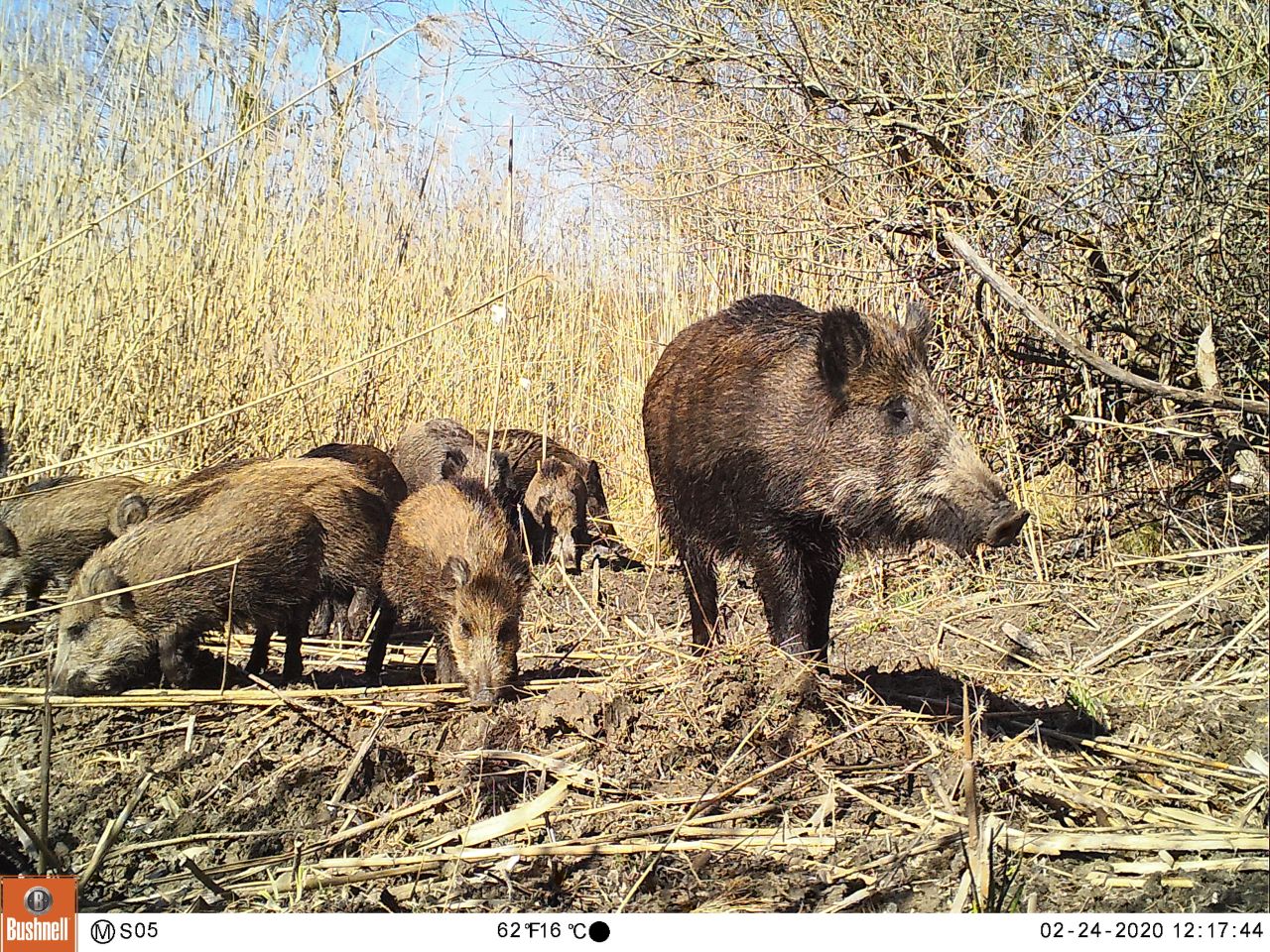Management concept for wild boar in waterbird and migratory bird reserves
Over the last 30 years, wild boar populations have increased sharply in Europe. Switzerland is not an exception to this trend, especially in areas located at the interface of natural reserves and agricultural land. Natural reserves or protected areas provide shelter, food and water – three important factors influencing the distribution of wild boar. In addition, nearby intensively farmed land provides a rich source of food and thus contributes to population growth. A recent study estimated the density of wild boar in the Fanel reserve at 20-26 individuals per square kilometre. This is one of the highest measured wild boar densities that we know of. High densities of wild boar can cause considerable damage to adjacent agricultural crops if they are not protected. Likewise, there is a possibility that this could have a negative impact on the balance of the fanel wetland ecosystem. Appropriate management for wild boar populations in the Fanel Reserve is therefore required.
The management concept aims to answer the following five fundamental questions:
- Which management strategy enables an optimal regulation of the wild boar population?
- Wie können die durch Wildschweine verursachten landwirtschaftlichen Schäden minimiert werden?
- How much risk of disease transmission is there between domestic pigs and wild boar and how can this risk be minimised?
- What impact does the wild boar population have on the reserve and its species conservation objectives?
- What are the maximum and minimum thresholds of wild boar population size at which regulation makes sense or is no longer necessary?

